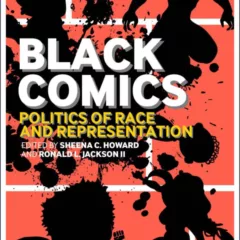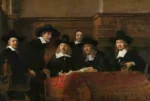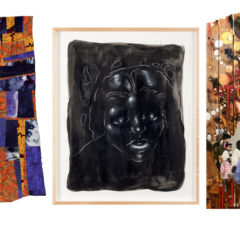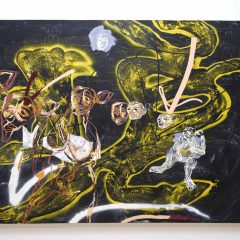Now in its 40th year as a non-profit serving artists in the Philadelphia Region, CFEVA, is the subject of Elizabeth’s new interview.
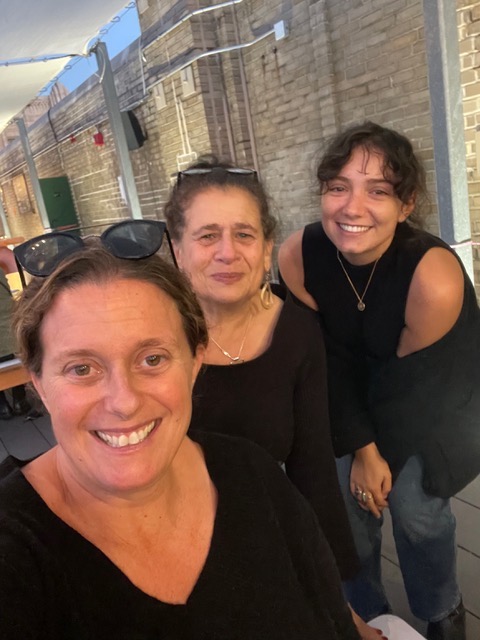
Elizabeth Johnson: The Center for Emerging Visual Artists was founded forty years ago, in 1983, as the Creative Artist Network by the late Felicity “Bebe” Benoliel. On the CFEVA website it says that you serve “more than 400,000 individuals annually, including an extensive network of more than 1,500 artists… .” Who are the other 398,500?
Genevieve Coutroubis: These are conservative numbers. We have a mailing list of 7,000, and many of these individuals are artists. Five hundred thousand includes the audience or others who are adjacent to our artists. For example, regarding our community outreach in nursing homes and hospitals, this number includes the staff, doctors, family, and friends, all of whom benefit along with the seniors that we engage through visual art. We also have wide-reaching programs like POST (Philadelphia Open Studios Tour) that attract huge audiences.
EJ: The statement on the website goes on to say that you are “committed to providing relevant, impactful programs that support, equip, and position our local visual artist community as a valuable contributor to our region’s vitality, cultural identity and livability.” Do you poll or sponsor studies that would collect data on the impact of the local arts community in Philadelphia?
GC: Yes, we make sure that our decisions are based on experience, data, and surveys. We will be rolling out a new post-Covid strategic plan this year. So much has changed for artists since COVID. People have moved, quit their jobs, and reorganized their priorities. It’s time to reassess artists’ needs. We really need artists to participate in the survey, so we know where to focus in coming years.
EJ: You have three staff members: you, Amanda Phillips, and Lily Gilston. What job would you fill if you had funding for another staff member?
GC: We would love to have someone to help with communication and additional fundraising support. It would be wonderful to be able to share all that we do and promote our artists more extensively. With additional grant writing/fundraising support we would be able to fully fund more critical programs.
EJ: How does CFEVA interface with foundations and philanthropists that want to support the visual arts in Philadelphia? Does Amanda Phillips, the principal fundraiser, continuously apply for grants? Can she break down where the money goes for us by percentages of a whole budget?
GC: Amanda is the principal fundraiser. I thought that it was appropriate to direct this question to her directly. This was her response, “Like all local and integral nonprofits in Philadelphia, CFEVA receives charitable income from generous foundations, local and state government, individual donors and local businesses. We continue to be a tiny, lean and nimble team with a mighty mission, so fundraising and nurturing our reliable sources of income while developing new revenue streams is a key responsibility of the Executive Director, Development and Operations. All our staff work hard to help maintain our financial stability, so that we can consistently provide our services to the local artist community we support. As with most other nonprofits, our annual income depends on a combination of contributed and earned monies, the ratio of which can change from year to year, depending on many factors. CFEVA’s financial documents are available to the public through typical platforms such as Guidestar or Candid.
”CFEVA offers many ways for the public and others to support our mission and take part in the dynamic art scene of our city. We make those options clear on our website (www.cfeva.org) and we are always willing to customize any gift or sponsorship so that a grantor or donor can feel that their wishes are represented in their donation.”
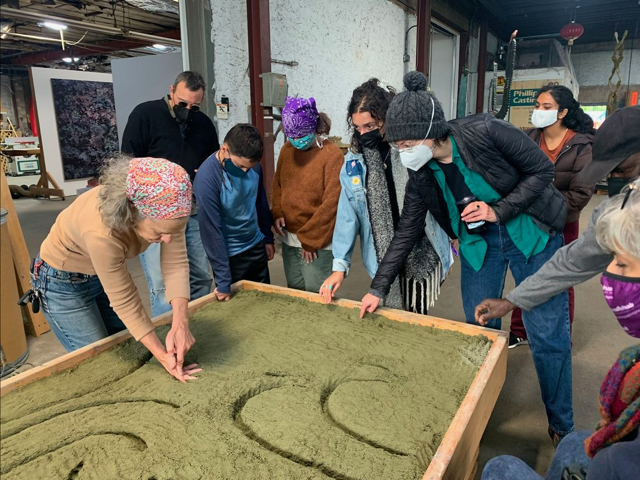
EJ: What are Lily’s chief roles? Do you rely on volunteers or other occasional help? If so, what do they do?
GC: Lily’s main focus is on POST, membership and several external exhibitions, though since we are a small nonprofit Lily works on everything. She helps with social media, the website, interns, and volunteers. We work with interns and volunteers on a regular basis. They assist in all aspects of programs, helping with presentation, events, promotion, and installation, (though we hire professional installers as well)…the list goes on.
EJ: How many artists participated in POST this year? Do you know how many sales were precipitated by the event? Does CFEVA get a percentage?
GC: There were 186 Artists and 65 Community Partners a part of POST 2022. In the past we have had as many as 350… . We are very much reemerging after COVID. Fifty-four percent of surveyed artists and partners anticipate future sales, exhibitions, or other professional opportunities as a result of this year’s POST. CFEVA does not take a percentage of art sales during POST. In addition to sales, POST is a wonderful way to connect with audiences, get feedback and secure future opportunities. As a former POST participant, Open Studios was always a highlight of my year.
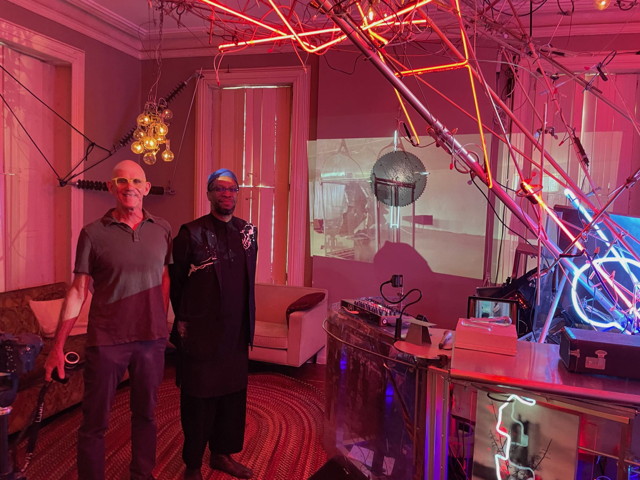
EJ: Describe a typical workday. What percentage of your time is phone calls, emails, meetings?
GC: Ha! One hundred percent! I communicate all day long. If we have an exhibit opening or another priority, I’ll be focused on that. But my days are filled with staying in contact with artists, collectors, partners, community groups and others.
EJ: How has CFEVA changed over the years?
GC: I first came to CFEVA over twenty years ago. Though many aspects of our programs have changed, the core purpose of CFEVA has stayed consistent. We are here to help artists reach the next level of their career. CFEVA is lucky to be small enough to be agile, and thus responsive to artist’s needs. Through 40 years we have added: Philadelphia Open Studio Tours, Art in the Open, a choice of membership levels, NewCourtland fellowships, and various Artist in Residence programs, just to name a few. The Visual Artist Fellowship has been in place for our entire 40-year history. The nature of the program has changed over the years but at the core our goal is still the same: providing funding and mentorship to help artists build sustainable careers.
EJ: Do you have specific advice for applicants to your programs?
GC: The best advice I have is to make sure that you have strong images of your work. Also make sure that your text answers questions directly and clearly. You have a better chance if the committee can easily determine if you are a good fit for our programming. Focus on documenting your work and editing your submission.
EJ: What is difficult about the job?
GC: I think for those of us that work in organizations we always wish we could do more for more artists. Funding is always a challenge especially when you are a small nonprofit. If we had unlimited resources, or at least more, many of the difficulties would vanish instantly.
EJ: What is your response to artists who don’t get chosen?
GC: If artists could see behind the scenes how much serious consideration and thought goes into the application process, I think they would understand that the important thing is to keep applying. Unfortunately for every four artists that are selected for the Fellowship hundreds apply. There is a lot that goes on behind the scenes with the applications that benefit the artists without them knowing. We often select artists for exhibitions, connect artists with collectors and provide artists with many other opportunities. In addition, members of our Board of Artistic Advisors also take note of artists, approaching them on their own for opportunities.
When I first started at CFEVA we had fewer programs. If an artist wasn’t accepted, they would have to wait until the next application process to engage with CFEVA. We now have many entry points and ways to engage and exhibit through CFEVA. That makes it easy on us. There are more ways for us to work with artists.
EJ: How does an artist apply to the Artsy shop? Do you advise applying simultaneously for the Visual Artist Fellowship and Visiting Curator Program?
GC: CFEVA’s Artsy page cannot be applied to directly. The content of that page is tied directly to our Fellowship, exhibitions and programming. The Fellowship and Visiting Curator are two very different opportunities. Artists should decide which program will benefit them the most and apply accordingly.
EJ: Does CFEVA coordinate service or education with the Philadelphia Art Museum or other local museums, galleries, and art schools? I notice that your LandLab program works with The Schuylkill Center for Environmental Education. Are there other similar, environmentally oriented partnerships?
GC: CFEVA survives and thrives through our partnerships. Over the years programs and partnerships change, groups that we collaborate with are the cornerstone of CFEVA. We have exhibited in the PMA, Delaware Art Museum, Delaware Contemporary, and The Galleries at Moore, to name a few. We will have a major collaboration with a local art museum in 2024, that I will be announcing soon. We have partnered with the School District of Philadelphia, NewCourtland Senior Services, Youth Services PEC… . The list goes on.
Often, we will join forces with non-profits to create artist residencies. Some examples of artist Fellowships that we co-founded are LandLab and the Glen Foerd Artist in Residence. We will be announcing an upcoming collaboration with Allens Lane soon. In terms of Environmental projects LandLab (in partnership with The Schuylkill Center for Environmental Education) and AiO (in partnership with Fairmount Water Works) are the two main projects.
EJ: Is it uncomfortable being a gatekeeper?
GC: I don’t consider myself a gatekeeper. We have an Art Advisory Board that picks the Visual Artist Fellowship recipients. Also, I coordinate selection processes including residencies, Visiting curator exhibitions etc.). I don’t sit on any of those selection committees. This is by design so our selection for programs is transparent and not tied to staff.
EJ: Do you have time for family and friends? And making your own photos?
GC: Yes, for sure. I make sure that I have a good balance. The work in a small non-profit never ends. I feel the key to longevity in any position is to make sure you have balance.
Every year I make time to travel back to Greece to photograph. What is great is that I have been able to spend my career working directly with artists. It is inspiring for my own work and life.
EJ: Do you plan to show this work or publish a book of your own work? You mentioned an upcoming show.
GC: I show my current work each time I exhibit. My next exhibit highlights 28 years of photographing Greece. This will be a huge undertaking, but I am excited to dive back into the thousands of negatives that I have. And yes, I still shoot film!
EJ: How did CFEVA function during the pandemic? Did you rely on Zoom studio visits?
GC: During the pandemic we met over Zoom. Our workshops and even POST moved to the computer. As restrictions eased, we opened the gallery and had large scale outdoor events. Now we are back in person, though Zoom meetings still make some things easier.
EJ: If you were given five million dollars to invest in CFEVA, how would you allocate the money?
Would the Board need to make a plan? Any idea what might come of a giant gift?
GC: We would definitely create a vision with our stakeholders, our board, advisors, artists and others–after we had a HUGE party, (just kidding.) We would look to create an endowment, increase our Fellowship and money to artists as well as grow our staff, so we could increase our benefit to the Visual Art Community.


